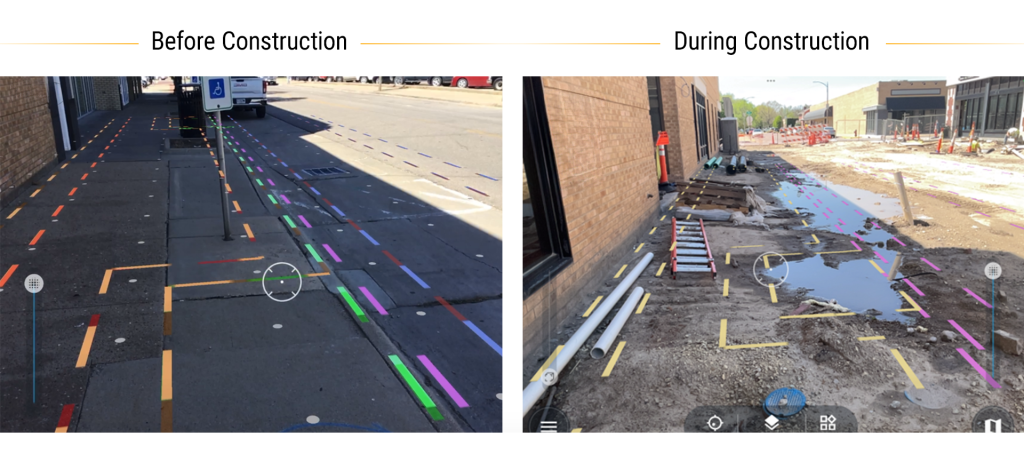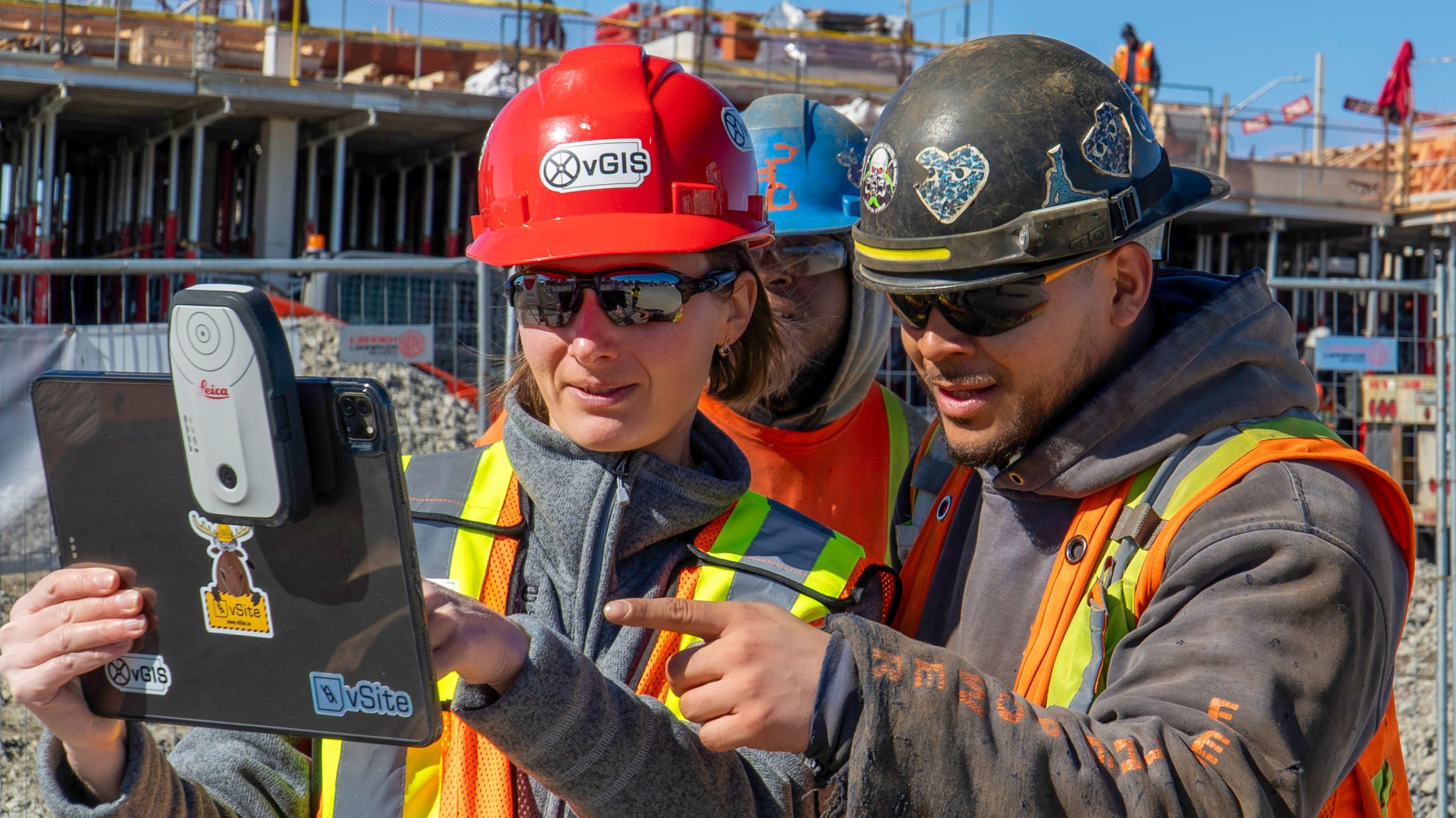
The Current State of AR
Augmented Reality (AR) has quickly advanced from a visionary idea to an essential technology transforming the Architecture, Engineering, and Construction (AEC) industries. This technology has significantly enhanced the way professionals visualize and interact with project data, driving advancements in project planning, execution, and documentation. Explore the transformative impact of Augmented Reality on project design, management, and construction—and see what’s on the horizon.
Enhanced Visualization and Precision
One of AR’s most notable contributions to AEC is its ability to superimpose digital models onto the physical world. This functionality allows architects, engineers, and construction professionals to see how a project will fit into its real-world context before any physical work begins. By using AR alongside digital twins, such as vSite, professionals can visualize a construction project’s progress through 3D scans, field reporting, design changes and more in real-time. This enhances accuracy and helps minimize the risk of costly errors.

Improved Collaboration
AR facilitates improved collaboration by providing a shared platform where everyone can view and interact with the same 3D models and data. Large data sets become much easier to access, making it simpler to review and share information across your entire team. This capability is particularly useful for remote teams, enabling them to review and discuss project details without being on-site. When integrated with platforms like Autodesk Construction Cloud, AR streamlines decision-making and reduces misunderstandings.

Streamlined Workflows
Another significant benefit of AR in AEC is its role in streamlining workflows. By overlaying AR models on physical job sites, construction teams can follow precise instructions and monitor progress more accurately. This results in more efficient workflows and ensures that construction aligns with design specifications.
New Trends in AR for AEC
- Integration with Digital Twins: Real-time monitoring and interaction with digital replicas of physical assets enhance accuracy and help maintain timelines and budgets.
- Advancements in AR Hardware: Improved AR glasses and headsets offer higher resolution, better field of view, and intuitive interfaces, expanding AR applications in AEC.
- Field Data Integration: AR is being used to overlay real-time data directly onto the physical environment, helping teams make informed decisions and spot issues more quickly.
- Improved Design Iteration: AR facilitates quicker and more effective design iterations by allowing users to make changes and see the impact in real-time.
- Client Engagement: AR is becoming a powerful tool for engaging clients by allowing them to visualize and interact with their projects before construction begins, leading to better alignment and fewer changes.
Interesting Use Cases
- Site Layout and Planning: AR visualizes complex designs and layouts on-site, improving accuracy and reducing clashes between systems.
- Design Reviews and Approvals: AR helps streamline design reviews by enabling clients and project teams to visualize and explore design changes in a realistic context, facilitating better feedback and approvals.
- As-Built Verification: AR assists in comparing construction progress with digital models, allowing teams to quickly identify discrepancies and ensure that the project is being built according to specifications.
- Client Presentations: AR enhances client presentations by allowing clients to explore virtual walkthroughs of their future projects, making it easier to convey design intentions and modifications.
What This Means for the Future of Smart Documentation
Augmented Reality is proving to be a transformative tool in the AEC industries. By enhancing visualization, improving collaboration, and streamlining workflows, AR is reshaping how projects are planned, executed, and managed. With ongoing advancements in AR technology and its integration with digital twins and real-time data, the future of AR in AEC holds great promise, offering even more innovative use cases and impactful changes in the industry.
I’m amazed by how augmented reality is transforming as-built verification! This technology streamlines the process and ensures greater accuracy. Exciting times ahead!
Gennadiy Vaksman, Director, Engineering at TELUS Agriculture & Consumer Goods


